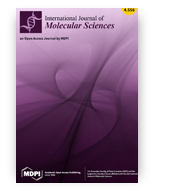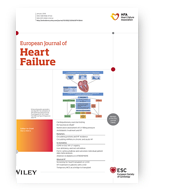The Impact of Graphite Oxide Nanocomposites on the Antibacterial Activity of Serum
Katarzyna Dorota Morka, Maciej Wernecki, Anna Kędziora, Marta Książczyk, Bartłomiej Dudek, Yuriy Gerasymchuk, Anna Lukowiak, Jarosław Bystroń, Gabriela Bugla-Płoskońska
International Journal of Molecular Sciences
 Nanoparticles can interact with the complement system and modulate the inflammatory response. The effect of these interactions on the complement activity strongly depends on physicochemical properties of nanoparticles. The interactions of silver nanoparticles with serum proteins (particularly with the complement system components) have the potential to significantly affect the antibacterial activity of serum, with serious implications for human health. The aim of the study was to assess the influence of graphite oxide (GO) nanocomposites (GO, GO-PcZr(Lys)2-Ag, GO-Ag, GO-PcZr(Lys)2) on the antibacterial activity of normal human serum (NHS), serum activity against bacteria isolated from alveoli treated with nanocomposites, and nanocomposite sensitivity of bacteria exposed to serum in vitro (using normal human serum). Additionally, the in vivo cytotoxic effect of the GO compounds was determined with application of a Galleria mellonella larvae model. GO-PcZr(Lys)2, without IR irradiation enhance the antimicrobial efficacy of the human serum. IR irradiation enhances bactericidal activity of serum in the case of the GO-PcZr(Lys)2-Ag sample. Bacteria exposed to nanocomposites become more sensitive to the action of serum. Bacteria exposed to serum become more sensitive to the GO-Ag sample. None of the tested GO nanocomposites displayed a cytotoxicity towards larvae.
Nanoparticles can interact with the complement system and modulate the inflammatory response. The effect of these interactions on the complement activity strongly depends on physicochemical properties of nanoparticles. The interactions of silver nanoparticles with serum proteins (particularly with the complement system components) have the potential to significantly affect the antibacterial activity of serum, with serious implications for human health. The aim of the study was to assess the influence of graphite oxide (GO) nanocomposites (GO, GO-PcZr(Lys)2-Ag, GO-Ag, GO-PcZr(Lys)2) on the antibacterial activity of normal human serum (NHS), serum activity against bacteria isolated from alveoli treated with nanocomposites, and nanocomposite sensitivity of bacteria exposed to serum in vitro (using normal human serum). Additionally, the in vivo cytotoxic effect of the GO compounds was determined with application of a Galleria mellonella larvae model. GO-PcZr(Lys)2, without IR irradiation enhance the antimicrobial efficacy of the human serum. IR irradiation enhances bactericidal activity of serum in the case of the GO-PcZr(Lys)2-Ag sample. Bacteria exposed to nanocomposites become more sensitive to the action of serum. Bacteria exposed to serum become more sensitive to the GO-Ag sample. None of the tested GO nanocomposites displayed a cytotoxicity towards larvae.
DOI:10.3390/ijms22147386
Application of a New Engineered Strain of Yarrowia lipolytica for Effective Production of Calcium Ketoglutarate Dietary Supplements
Ludwika Tomaszewska-Hetman, Anita Rywińska, Zbigniew Lazar, Piotr Juszczyk, Magdalena Rakicka-Pustułka, Tomasz Janek, Marta Kuźmińska-Bajor, Waldemar Rymowicz
International Journal of Molecular Sciences
 The present study aimed to develop a technology for the production of dietary supplements based on yeast biomass and α-ketoglutaric acid (KGA), produced by a new transformant of Yarrowia lipolytica with improved KGA biosynthesis ability, as well to verify the usefulness of the obtained products for food and feed purposes. Transformants of Y. lipolytica were constructed to overexpress genes encoding glycerol kinase, methylcitrate synthase and mitochondrial organic acid transporter. The strains were compared in terms of growth ability in glycerol- and oil-based media as well as their suitability for KGA biosynthesis in mixed glycerol–oil medium. The impact of different C:N:P ratios on KGA production by selected strain was also evaluated. Application of the strain that overexpressed all three genes in the culture with a C:N:P ratio of 87:5:1 allowed us to obtain 53.1 g/L of KGA with productivity of 0.35 g/Lh and yield of 0.53 g/g. Finally, the possibility of obtaining three different products with desired nutritional and health-beneficial characteristics was demonstrated: (1) calcium α-ketoglutarate (CaKGA) with purity of 89.9% obtained by precipitation of KGA with CaCO3, (2) yeast biomass with very good nutritional properties, (3) fixed biomass-CaKGA preparation containing 87.2 μg/g of kynurenic acid, which increases the health-promoting value of the product.
The present study aimed to develop a technology for the production of dietary supplements based on yeast biomass and α-ketoglutaric acid (KGA), produced by a new transformant of Yarrowia lipolytica with improved KGA biosynthesis ability, as well to verify the usefulness of the obtained products for food and feed purposes. Transformants of Y. lipolytica were constructed to overexpress genes encoding glycerol kinase, methylcitrate synthase and mitochondrial organic acid transporter. The strains were compared in terms of growth ability in glycerol- and oil-based media as well as their suitability for KGA biosynthesis in mixed glycerol–oil medium. The impact of different C:N:P ratios on KGA production by selected strain was also evaluated. Application of the strain that overexpressed all three genes in the culture with a C:N:P ratio of 87:5:1 allowed us to obtain 53.1 g/L of KGA with productivity of 0.35 g/Lh and yield of 0.53 g/g. Finally, the possibility of obtaining three different products with desired nutritional and health-beneficial characteristics was demonstrated: (1) calcium α-ketoglutarate (CaKGA) with purity of 89.9% obtained by precipitation of KGA with CaCO3, (2) yeast biomass with very good nutritional properties, (3) fixed biomass-CaKGA preparation containing 87.2 μg/g of kynurenic acid, which increases the health-promoting value of the product.
DOI:10.3390/ijms22147577
High Soluble Transferrin Receptor in Patients With Heart Failure: a Measure of Iron Deficiency And a Strong Predictor of Mortality
Radosław Sierpiński, Krystian Josiak, Tomasz Suchocki, Katarzyna Wojtas-Polc, Grzegorz Mazur, Aleksandra Butrym, Piotr Rozentryt, Peter van der Meer, Josep Comin-Colet, Stephan von Haehling, Wojciech Kosmala, Monika Przewłocka-Kosmala, Waldemar Banasiak, Jolanta Nowak, Adriaan A. Voors, Stefan D. Anker, John GF Cleland, Piotr Ponikowski, Ewa Anita Jankowska
European Journal of Heart Failure
 Aims: Iron deficiency (ID) is frequent in heart failure (HF), linked with exercise intolerance and poor prognosis. Intravenous iron repletion improves clinical status in HF patients with left ventricular ejection fraction (LVEF) ≤45%. However, uncertainty exists about the accuracy of serum biomarkers in diagnosing ID. The aims of this study were (i) to identify the iron biomarker with the greatest accuracy for the diagnosis of ID in bone marrow in patients with ischaemic HF, and (ii) to establish the prevalence of ID using this biomarker and its prognostic value in HF patients. Methods and results: Bone marrow was stained for iron in 30 patients with ischaemic HF with LVEF ≤45% and 10 healthy controls, and ID was diagnosed for 0–1 grades (Gale scale). A total of 791 patients with HF with LVEF ≤45% were prospectively followed up for 3 years. Serum ferritin, transferrin saturation, soluble transferrin receptor (sTfR) were assessed as iron biomarkers. Most patients with HF (n = 25, 83%) had ID in bone marrow, but none of the controls (P < 0.001). Serum sTfR had the best accuracy in predicting ID in bone marrow (area under the curve 0.920, 95% confidence interval 0.761–0.987, for cut-off 1.25 mg/L sensitivity 84%, specificity 100%). Serum sTfR was ≥1.25 mg/L in 47% of HF patients, in 56% and 46% of anaemics and non-anaemics, respectively (P < 0.05). The reclassification methods revealed that serum sTfR significantly added the prognostic value to the baseline prognostic model, and to the greater extent than plasma N-terminal pro B-type natriuretic peptide. Based on internal derivation and validation procedures, serum sTfR ≥1.41 mg/L was the optimal threshold for predicting 3-year mortality, independent of other established variables. Conclusions: High serum sTfR accurately reflects depleted iron stores in bone marrow in patients with HF, and identifies those with a high 3-year mortality.
Aims: Iron deficiency (ID) is frequent in heart failure (HF), linked with exercise intolerance and poor prognosis. Intravenous iron repletion improves clinical status in HF patients with left ventricular ejection fraction (LVEF) ≤45%. However, uncertainty exists about the accuracy of serum biomarkers in diagnosing ID. The aims of this study were (i) to identify the iron biomarker with the greatest accuracy for the diagnosis of ID in bone marrow in patients with ischaemic HF, and (ii) to establish the prevalence of ID using this biomarker and its prognostic value in HF patients. Methods and results: Bone marrow was stained for iron in 30 patients with ischaemic HF with LVEF ≤45% and 10 healthy controls, and ID was diagnosed for 0–1 grades (Gale scale). A total of 791 patients with HF with LVEF ≤45% were prospectively followed up for 3 years. Serum ferritin, transferrin saturation, soluble transferrin receptor (sTfR) were assessed as iron biomarkers. Most patients with HF (n = 25, 83%) had ID in bone marrow, but none of the controls (P < 0.001). Serum sTfR had the best accuracy in predicting ID in bone marrow (area under the curve 0.920, 95% confidence interval 0.761–0.987, for cut-off 1.25 mg/L sensitivity 84%, specificity 100%). Serum sTfR was ≥1.25 mg/L in 47% of HF patients, in 56% and 46% of anaemics and non-anaemics, respectively (P < 0.05). The reclassification methods revealed that serum sTfR significantly added the prognostic value to the baseline prognostic model, and to the greater extent than plasma N-terminal pro B-type natriuretic peptide. Based on internal derivation and validation procedures, serum sTfR ≥1.41 mg/L was the optimal threshold for predicting 3-year mortality, independent of other established variables. Conclusions: High serum sTfR accurately reflects depleted iron stores in bone marrow in patients with HF, and identifies those with a high 3-year mortality.
DOI:10.1002/ejhf.2036









